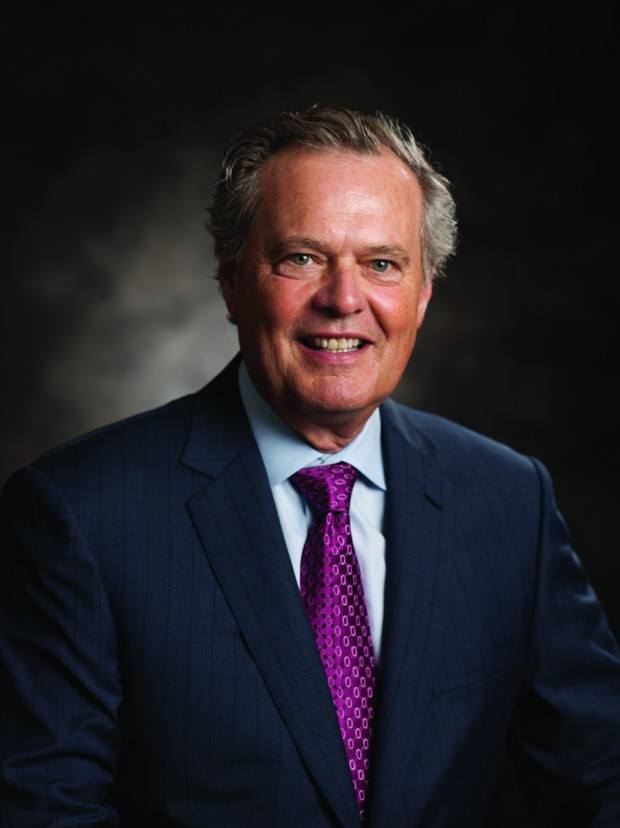“If you can keep your head when all about you are losing theirs…”
With apologies to Rudyard Kipling, you might finish that sentence with the phrase “you can be the chief operating officer of a property/casualty insurance carrier.” At least, that’s how you might finish it after talking to one: RLI Corp.’s Michael Stone.
Executive Summary
At RLI, a company that has recorded 18 consecutive years of underwriting profits, operational challenges revolve around growth initiatives—integrating new products and acquired teams of people, says COO Michael Stone. The former claims executive says people management skills are critical to success in the COO role.This article is part of a five-part series of profiles of COOs of P/C insurers.
Stone used Kipling’s line when we asked him about some of the defining characteristics of chief operating officers.
“People are looking for leadership, and they watch how you behave and how you manage through situations. You want to make sure that they understand and feel like you’re in control without being controlling,” he adds.
With RLI declaring an extraordinary cash dividend for holders of the company’s common stock the day before Carrier Management’s interview with Stone—tangible evidence of the specialty insurer’s ongoing record of financial performance—it doesn’t seem like there’s much for anyone to be losing their heads about at RLI.
But with more than a decade in the COO role under his belt, the 37-year veteran of the P/C industry says that combining the skills to manage people with an ability to be patient yet decisive has helped the former claims executive rally the troops through times of stress.
Here, Stone talks about the situations that a P/C COO has to control and his own path to the C-suite.

Q: What has been the toughest challenge you had in the role of chief operating officer?
Stone: I don’t know if there’s any one, but those that stand out are all similar. They revolve around people—either disciplining people or promoting people, and how the organization manages through that.
How you communicate, how you carry yourself, how you steer the organization through it—those are tough. The tough problems revolve around people. And at the end of the day, this is a people business. Attracting and retaining the best people is really important.
Q: Given your view—that the COO role is about managing people—does it follow that you don’t think someone needs to have experience in the P/C insurance industry to be COO of a P/C carrier?
Stone: No, I think the insurance background is very important. I’m not saying that a good manager can’t manage anything. But I think you’ll find that most good managers had, in their career, some technical expertise and some technical depth. They know something about the product that they’re selling.
It’d be hard for an aircraft engine guy to come to RLI and be a good P/C COO. I’m not saying he couldn’t be, or she couldn’t be. I just think there’s something about feel for the business. There’s something about gut for the business, instinct, whatever the right word is that comes from experience [and] technically understanding how the business works.
All businesses work the same, by and large. You’re trying to make a profit, you’ve got expenses, etc. But…property/casualty insurance has its own peculiar complexities. Understanding those takes some knowledge, and typically experience. To try to do the job without that would be very, very difficult.
Q: Tell us about your background.
Stone: I spent my career until I moved to RLI in 1996 with Travelers, most of the time in Hartford. I came up the claims side of the business. I’m a lawyer by education but an insurance claims professional by trade.
I held a number of positions at Travelers with increasingly more responsibility. I was running the casualty claims department at Travelers when I got a call from RLI to come run their claims department as a vice president. At the time, the company [RLI] was quite a bit smaller, but we’ve had a good run over the 17 years that I’ve been here.
When our chief underwriting officer left to take a position with a different company, I combined those two roles. I took charge of underwriting in our branch offices. We do our underwriting out in the field and those field product [leaders] reported to me, as well as the claims department, the home office underwriting department and our operations staff.
So I was running the technical insurance functions as a senior vice president. Then I came to this current role shortly after [former COO] Jon [Michael] stepped up to be the CEO and Jerry Stephens, our founder, became the nonexecutive chairman…It wasn’t a big change. In a lot of ways it was a title change to recognize what I was doing.
WHO LEADS THE OPERATIONS?
President & Chief Operating Officer Michael J. Stone
Company: RLI Corp.
Prior Experience:
• 1977, started with Travelers as a claims professional by trade.
• 1996, joined RLI as VP of Claims.
• Later took positions as chief underwriting officer, SVP Operations, before becoming COO.
What’s going on?
• In January, RLI reported its 18th consecutive year of underwriting profit.
• Recent office building renovation.
• Several recent acquisitions, including a West Coast surety company, a medical malpractice company and startup product launches.
What he thinks:
“This job is really about people. Do we have the right people in the right places? How are we motivating them? How do we get them to be as productive as they can be and keep them interested in RLI and the RLI way?”
Q: Your first transition from claims was to take on the responsibilities of the CUO. Was that difficult?
Stone: It’s obviously a different technical skill, but it’s still insurance. And it wasn’t like I was underwriting individual risks. I was managing people, which is a skill a bit apart from the technical skill. I had been managing people for quite some time.
At RLI, we have product heads who are really responsible for the underwriting of their particular products. My role was to provide oversight from a corporate perspective and to make sure that they weren’t running us into any brick walls or over cliffs—trying to manage the aggregate risks.
Managing a department and managing these people who were experts in their field is not something from which I was that far removed. I won’t say the transition was easy. At my age it was a challenge, but a welcome challenge.
Q: Beyond managing people, is there any other way in which a career in claims helped to prepare you for the COO role?
Stone: At the end of the day what we’re selling as an insurance company is financial security and management of those customers after a loss. I saw that up close and personal. I was day-to-day involved in that.
Most senior executives in insurance don’t come up that side. I think that gives me a bit of insight that helps across our senior management team that most companies don’t have.
Q: What is your typical day like?
Stone: Like most management jobs, you’ve got people in place directing their functions who have technical expertise. So I’m really making sure everybody understands our strategy—that we’re all pulling in the same direction.
Everything isn’t always working perfectly, so you’re spending more time in one area than another to try to help get things going in the right direction or fixing something that’s a bit broken.
My day is one of going to meetings by and large, talking with people, traveling, going up to visit our branch offices…I also spend time with the investment community. I’m trying to influence people. I’m trying to get them to understand the RLI story, the competitive advantages we have, the value creation we provide.
It’s really trying to influence people at all levels—customers, employees, regulators, investment community. That’s what the job is about.
Q: What areas have commanded most of your attention recently?
Stone: We’ve gone through a complete building renovation, so managing to keep our people working throughout that and keeping them focused on the customers.
We’ve expanded quite a bit over the last five years. We had to integrate a surety company in the West Coast into our operations. We’ve integrated a medical malpractice company into our operations.
We’ve had a number of startup products over the last four or five years. It’s integrating them, getting them up and running, getting their systems developed and implemented so that they can write business.
It’s just those kinds of things that revolve around growth—developing new products, implementing new products, integrating new companies.
Q: How do you learn to manage people? Or is it just an inborn skill?
Stone: Like most things, it’s a bit of both.
Some of it you gain through experience, some of it you gain through a simply technical training of some sort or another, and some of it is your personality. It’s how you keep your cool—keep your head while other people are losing theirs [and] manage through issues and chaos.
I’m experienced, so I’ve been through a few situations. I think that helps.
I think there’s a place for somebody that’s been around for quite a long time and there’s a place for younger people that are moving up and have got a lot of energy and a lot of drive.
Q: Do you have any kind of mentors in the business or role models?
Stone: I’ve had people down through the years in various positions that I relied on as a mentor, or at least a friend or colleague in the business that I could seek advice from that wasn’t my boss, which I think is important.
It’s important in the corporate world to have tentacles throughout the organization no matter where you sit. It’s not just the org chart that [determines] the way information flows or the way things get done. It’s having relationships with people at all levels—either for information or for technical expertise, or for just relaxation or release.
It’s important to have an organization and the proper structure, but you also need to have an informal network.
Q: Let’s talk some more about the organizational structure of the operations of RLI. Which functions are centralized at RLI, and which are delivered at the underwriting products division? Who’s making decisions about staffing and technology at the product level?
Stone: The people that run our individual products participate in everything that has to do with their products. But we do the financial function in a centralized way; we do our human resources in a centralized way. Likewise for our IT and our actuarial work.
Our claims department is separate organizationally. We have claims people that sit with particular products and are experts in particular products, but they report to the claims department and not to the underwriting function.
We centralized the things that are efficient to centralize, or that need to be centralized from a separation of authority or responsibility basis. Everything else, we want the underwriting product expert—the product leader—to be driving.
Q: During your tenure, what are some of the most significant changes that have occurred in the operational aspects of the company?
Stone: Over the 40 years I’ve been in the business and the 20 years I’ve been at RLI, the development of systems—the necessity of efficient operating systems to deliver our product and administer our product—has been the biggest change. We’ve gone from paper to very efficient electronic business systems that are fairly complex. They’re complex to develop, and they’re complex to implement…
[In addition], I think every [company’s] gotten a bit flatter over time. There’s not quite as much hierarchy. There’s not an administrative assistant sitting in every corner. There’s not a supervisor for every three people. There are more knowledge workers.
Those are the two changes as I look back that seem fairly stark to me.
Q: What’s the best decision you’ve made in your tenure?
Stone: The best decision I made in my business life was to work for RLI—and I don’t say that lightly. I was with a big company, and I was at a stage in my life, age-wise and experience-wise, where I was either going to become a lifer or I was going to leave. Not that Travelers isn’t a great place. But you can have a much, much bigger impact in a smaller place, and a much bigger impact in a shorter period of time.
Q: What about the biggest lesson learned?
Stone: Probably patience, tolerance, those kinds of things.
The more experienced I’ve become, the more tolerant I’ve become—of different styles, different walks of life, and different ways that people approach life and therefore approach their work.
Then there’s the patience to really understand and deal with people and with situations.
Anybody can make a decision; it’s trying to make the right one. So it’s having the patience to think through things without being too deliberative. You’ve got to decide, but a bit of patience around that usually goes a long way.
Q: What are some of the top goals that you set for RLI over the near-term horizon?
Stone: The biggest challenge we have is to keep our performance up. Our performance has been very, very good, and to continue at that level of performance is difficult. We’re on a perch and want to stay up there.
And we have to grow. That’s true for any company. You don’t have to grow evenly, and you probably shouldn’t grow evenly or consistently. But over time you’ve got to grow because your expenses are going to increase, people are going to want more, and you’ve got to provide opportunities for people.
The way you provide opportunities for people is to grow. You grow, and new jobs are created, new needs are developed, and that’s how people get new opportunities and get growth and advancement in their career and in their life.
- How to Make an Underwriting Profit? RLI’s CEO Jonathan Michael Explains
- RLI’s CEO Jonathan Michael Discusses Market Competition, Berkshire Specialty
Additional Profiles with Operations Leaders:





















 The Governance Test for AI in Underwriting
The Governance Test for AI in Underwriting  Chaos Inside FEMA as Death Threats Distract From Hurricane Response
Chaos Inside FEMA as Death Threats Distract From Hurricane Response  Insurance Industry Reps Back Reauthorization of Federal Terrorism Backstop
Insurance Industry Reps Back Reauthorization of Federal Terrorism Backstop  Inflation Hits Med Mal: Actuaries Estimate $4B for Economic + Social
Inflation Hits Med Mal: Actuaries Estimate $4B for Economic + Social 







